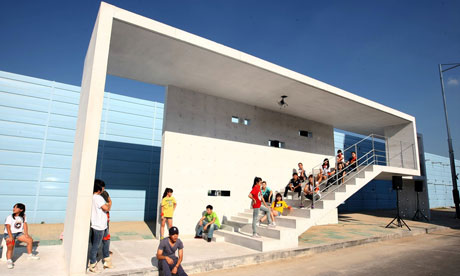News


Korea's design biennale presents extreme works rather than commercially-driven product displays
Curated by Korean starchitect H-San Seung and Ai Weiwei, this year's Gwangju Design Biennale presents an extreme body of work (not a chair in sight) including: a pamphlet handed out in Tahrir Square during the Egyptian uprising that advised protesters on the most effective tactics for civil disobedience, including how to improvise a helmet and breach police lines; designs for IEDs (improvised explosive devices); a video of the plastic surgery that Ultimate Fighting Championship competitors can undergo in order to to bleed less from the nose or above the eyes; and a section on communities, which includes the WikiHouse, an open-source house design kit.
The biennale directors also played a more traditional hand by bringing in a number of internationally recognised architects, like Peter Eisenman and Atelier Bow-Wow, to build follies around the city. You can read more on the 2011 Gwangju Design Biennale here (a review by the Guardian's Justin McGuirk) and here (an interview with H-Sang Seung).
Image: Francisco Sanin's Folly built for the Gwangju Design Biennale
